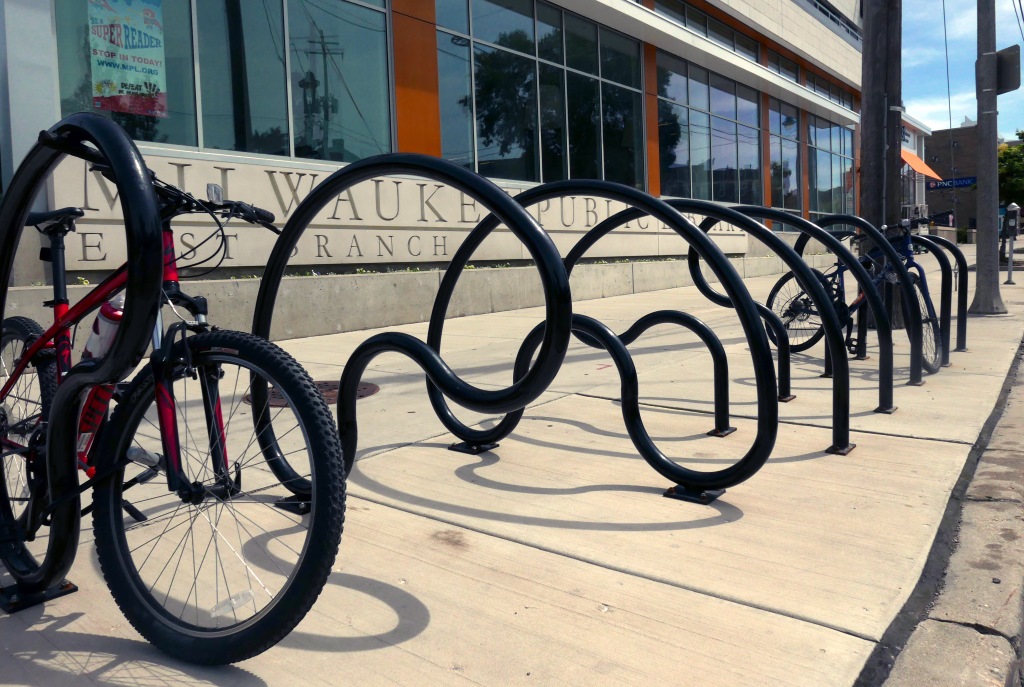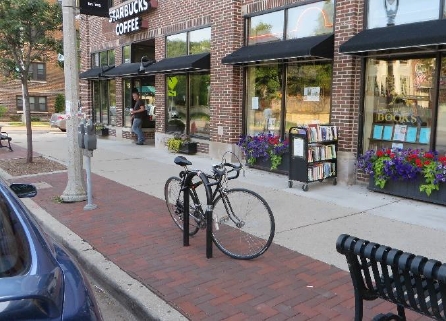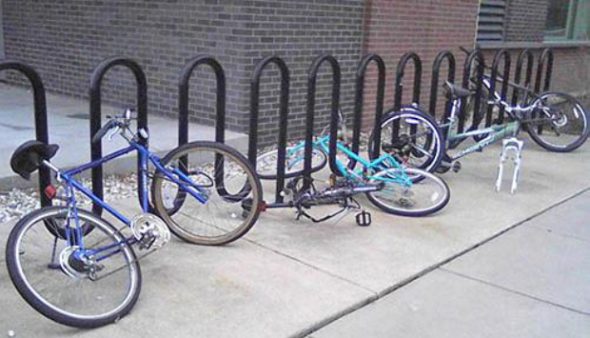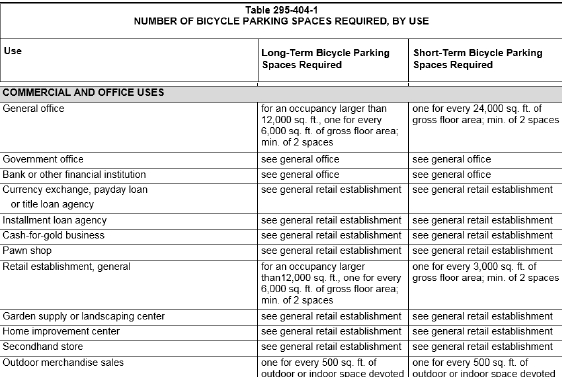More Parking for Bikes
City ordinance would set new standards for bike parking in new and redeveloped buildings.
A new ordinance moving through city government would create new minimum standards for bicycle parking throughout the city as part of an effort to increase and encourage bike transit.
The rules are really an update to an existing ordinance for bicycle parking. Planners from the Department of City Development (DCD) have been working on it for over a year.
The current ordinance for bicycle parking is limited in scope and vague. And while many businesses and new developments are installing extra bike parking on their own, the new rules will provide minimum standards for all new or redeveloped buildings in the city.
“More Milwaukeeans are just biking,” said Greg Patin, strategic development manager with DCD, at the City Plan Commission meeting Monday.
The notion of more bicycle parking is drawn from a 2010 planning document called Milwaukee by Bike. It lays out a number of goals for increasing bicycling in Milwaukee, an important one being increased bicycle infrastructure.
One of the big goals in the document is that by 2020 five percent of all trips within the city are made by bicycle. A key to meeting this goal is infrastructure that makes bicycles a viable option for getting around. The new ordinance lays out minimum rules and standards for the type, placement and amount of bike parking for various types of developments.
These rules are a “piece of the puzzle,” said James Hannig, the new bicycle and pedestrian coordinator with the Department of Public Works. But, he added, “it’s not a silver bullet.”
Data on how many now ride bikes in the city is limited. Milwaukee hasn’t done a recent survey, so planners rely on census data which only tracks bicycling to work. Right now, .9 percent of Milwaukeeans bike to work, which is actually a 100 percent increase from 2010 levels, Hannig said.
Along with the goals laid out in the 2010 planning document, Mayor Tom Barrett has committed the city to the Path to Platinum initiative, which, as Hannig pointed out, requires the city to reach a point where 12 percent of Milwaukeeans are biking to work, according to the League of American Bicyclists’ standards.
Patin said DCD has already tested some of the proposed ordinance standards on real projects like The Couture and the new Bucks arena.
One problem with the existing ordinance is its vague language concerning what projects the ordinance covers. The proposed update specifies that bike parking is required for both residential and commercial developments. And while the existing ordinance only covers new buildings, the update would cover redeveloped buildings, too.
Also, one change bicyclists will be happy to see is an addition of standards for bike racks. All new racks that will be counted towards a property’s minimum level of parking must have “two-point parking,” which allows the bike to be locked up in two spots, usually the front wheel and the frame.
The most common and also optimum two-point parking stall for bikes is the U-shaped bar. Comb racks that only lock the front tire will not be counted towards minimum parking levels, and troublesome wave racks that leave bikes laying on the ground cannot be counted by new projects.
The rules are “not meant to stifle the idea and creativity of racks,” Patin told the commission. In fact, there are some examples of creative two-point parking. Specifically, the interesting rack in front of the E. North Ave. library, he said.
Along with specifics on bike racks, the ordinance allows more flexibility for buildings to provide long-term bike parking. Right now, a lot of long-term parking is in the form of basement bike racks at residential buildings. But the new ordinance would allow the construction of accessory structures so residents can store their bikes.
In the ordinance language, a short-term space is defined as a parking space used less than three hours and a long-term space is one used more than three hours. This distinction is important to the standards in the new ordinance.
For example, a residential building will be required to have one outside short-term parking space for every 30 units with a minimum of two spaces. But it must also have one long-term space for every 4 units. For a retail establishment, the requirements are set per square foot, requiring one short-term space for every 3,000 square feet with a minimum of two and a maximum of 20 per occupancy. For long-term spaces, a retail enterprise will need to be at least 12,000 square feet, at which point it must create one space for every 6,000 square feet with a minimum of two spaces and a maximum of 10 spaces.
Office buildings and manufacturing facilities also face requirements by square foot, but have much larger square footage requirements per parking space.
In the code itself, the requirements will be laid out in tables, similar to the way vehicular parking is laid out. This should make compliance easier for businesses and the city alike to check on.
And all the rules are really just the minimum standards. As Patin put it: “We’re encouraging people to provide more than this.”
At Monday’s meeting of the City Plan Commission the ordinance received unanimous support and will now go before the Zoning, Neighborhoods & Development Committee.

























Where are the parking meters for the bicycle parking to support these bike racks?
SBBW, where is the parking meter in front of your house where I’m sure you park in the street occasionally.